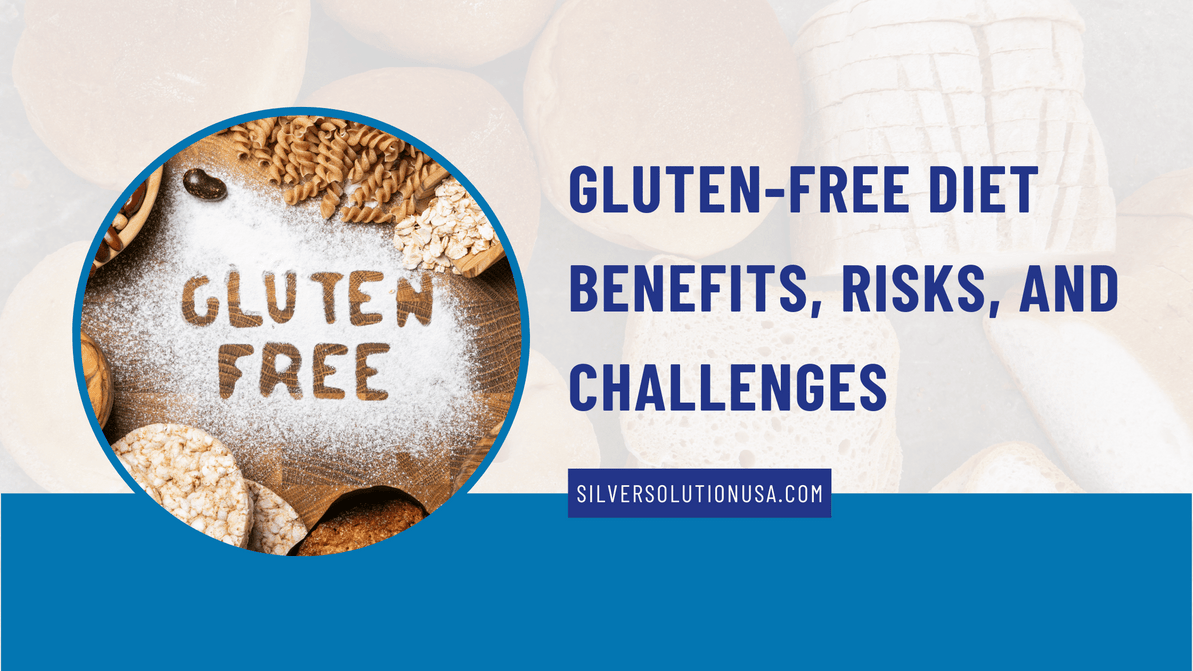Gluten-Free Diet Benefits, Risks, and Challenges
Gluten-free diets are the newest trend in the health & wellness world. Until recently, they were reserved for those with Celiac disease or gluten intolerances. Now more and more people are choosing to remove gluten from their diets. What are their reasons? Are there any benefits to gluten-free diets for those who are not allergic? And do these diets have any risks? We’ll talk about all this and more.
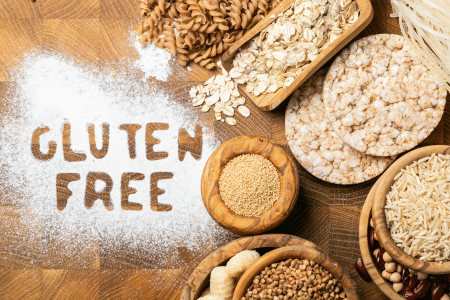
What is gluten?
Gluten is a protein found primarily in wheat but also in rye, spelt, and barley. Sometimes you may also find it in semolina, malt, and yeast. In other words, gluten is in bread, pastries, pizza, pasta, sauces, and even beer.
Plus, this protein can be tricky and can easily contaminate foods that wouldn’t typically contain it. Take potato chips, for instance. When you think about what they’re made of, gluten shouldn’t be in there. Yet, if the factory that processes them makes something wheat-based, the potato chips will most likely be contaminated.
For most people, gluten is not an issue. In fact, whole wheat grains are part of a healthy diet and have many benefits. But if you have a gluten intolerance, this ingredient is an absolute no.
If you have celiac or gluten ataxia, you’ll need to stay away from foods containing gluten and those with traces of it. People with non-celiac gluten sensitivity have it easier, as they can usually tolerate traces.
The problem is gluten is everywhere. You’ll find it in many processed foods, as a “hidden” ingredient in sauces, and even in some beverages. That makes a gluten-free diet a reasonably difficult one. Replacements like gluten-free bread or pasta are often a lot more expensive than their classical counterparts.
And yet, many people without any diagnosed gluten intolerances are adopting this lifestyle and stand by its benefits. Doctors, however, often mention the risks of removing entire food groups to eliminate gluten.
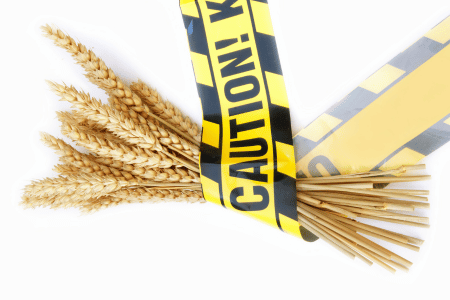
Gluten-free diet benefits
Is a gluten-free diet for those without intolerances a fad? It could be, but despite its difficulties, such a diet can have various health benefits despite its challenges.
1. Improved digestion
One of the first benefits many people notice when they remove gluten from their diets is improved digestion. They start experiencing less bloating, gas, or diarrhea.
The explanation could simply be a non-celiac gluten sensitivity. Another possibility is that by avoiding gluten, you start eating healthier. Gluten is, after all, in many processed foods.
You’ll often have to opt for more whole foods, fruits, veggies, nuts, seeds, meat, or dairy to avoid it. Plus, you might have to cook more at home, thus having more control over what goes on your plate.
2. Increased energy levels
Some people who go gluten-free report having more energy, and research has been unable to give a definitive answer as to why that is. Some claim gluten is inflammatory, and inflammation leads to chronic fatigue.
To understand why, we must look again at the foods you’re eliminating. If you stop eating pastries, or bread, for instance, and replace them with fruits and veggies, your blood sugar levels will be more stable.
Fluctuating blood sugar levels can cause low energy and even contribute to chronic fatigue, so keeping a stable level could help you feel more energized.
3. Less inflammation
Gluten often finds its spot on the list of inflammatory foods. It is one of the reasons why many recommend cutting it out if you struggle with conditions like polycystic ovarian syndrome (PCOS) or even endometriosis.
The evidence we have in this regard is primarily anecdotal. Plus, again, cutting out gluten means cutting out pastries and many junk foods. So is inflammation reduced because you’re not eating gluten or because you removed many unhealthy foods? Studies don’t have a definitive answer yet.
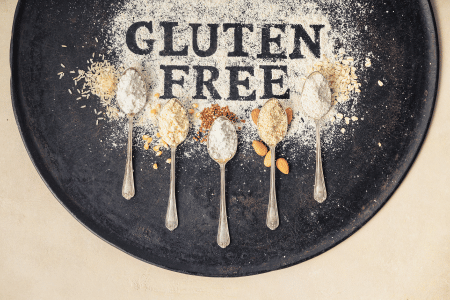
4. Weight loss
You can’t say the word “diet” and not talk about weight loss. Can a gluten-free diet help you lose weight? It can, but only up to a point.
Removing gluten from your diet will make you more aware of what you eat. You’ll probably have to read the label of every single packaged food you buy and even ask the server what they used for that appealing sauce.
Done right, a gluten-free diet will help you eat healthier, which could lead to weight loss.
5. Improved mood
There is some evidence that a gluten-free diet could help boost your mood and even fight depression. People with celiac disease seem more prone to depression, and a strict gluten-free diet can reduce their symptoms. From here, many argue the same benefits could exist even for those without celiac.
Another factor is the inflammatory effect some say gluten has. Inflammation has been proven to play a role in some mental health conditions, including depression. An anti-inflammatory diet could potentially aid in boosting your mood and reducing the incidence of depression.
6. Better-looking skin
Another benefit reported by many people who go gluten-free is better-looking skin. There are no studies to point us toward why this may be happening. The most likely explanation is that by removing gluten, you’re eliminating many highly processed foods. The chemicals and sugars they contain often contribute to things like acne, dry or oily skin, and more.
Plus, this could go hand in hand with the first benefit on our list—improved digestion. Believe it or not, gut health can impact how our skin looks. Good digestion often comes with more radiant skin and fewer pimples.
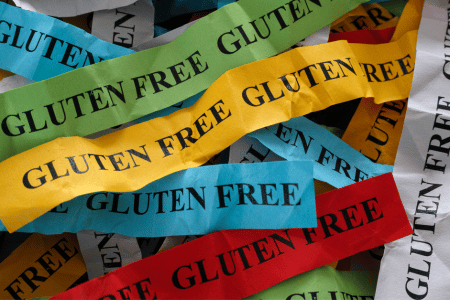
Risks of a gluten-free diet
Despite being promoted as an extremely healthy lifestyle, a gluten-free diet is not risk-free. That’s why, unless you have an intolerance, you should think twice before trying it.
1. Nutritional deficiencies
It is widely known that people with celiac are at a higher risk for nutritional deficiencies, and a gluten-free diet does not help lower this risk. Plus, this type of diet can cause dietary deficiencies even in those without celiac.
The first and most obvious reason is completely removing certain foods from your diet. These foods contain a lot of vitamins and minerals. Bread, for instance, is a source of thiamin, riboflavin, iron, niacin, and folate.
Other foods, like breakfast cereal, are often enriched with vitamin B. The gluten-free counterparts of these foods don’t always contain the same vitamins.
For instance, enriching with vitamins is less common in gluten-free cereal or bread. Plus, they will have a different nutritional profile since they have different ingredients.
If you still want to or have to go gluten-free, make sure you have a well-balanced diet and keep an eye on vitamin and mineral levels, as sometimes you might need to supplement.
2. High costs and limited food choices
If you’ve ever peeked at the gluten-free area at your local supermarket, you may have noticed the prices are significantly higher there.
The reasons? Production costs are often higher because certified gluten-free foods need to have no traces of gluten whatsoever. That means a dedicated production line, carefully selected ingredients, and more attention from staff to avoid contamination.
Not to mention that ingredients are often harder to find and more expensive, so the cost of production goes even higher.
The same will be true for gluten-free restaurants. They must live up to very strict standards and work with expensive ingredients, so the final products will be more expensive.
And even if you’re willing to pay the price, you might still find your options are very limited. Not every factory out there creates gluten-free versions of their products, so there are many things you’ll need to say goodbye to.
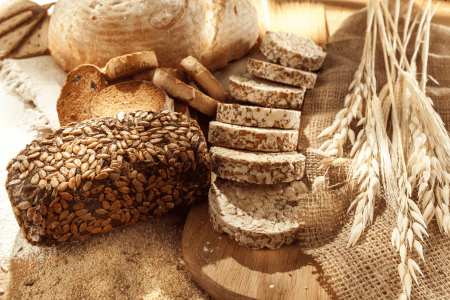
3. Not always a healthy diet
Diet culture gave many people the idea that gluten-free equals healthy eating. On the one hand, that is true. If you give up highly processed foods, pastries, and bread and replace them with whole foods, you’ll be eating a healthier diet.
On the other hand, sooner or later, you’ll be tempted to go for gluten-free alternatives to your favorite foods. These foods are not always as healthy as you’d expect. For instance, gluten-free bread is often filled with additives and chemicals to give it that spongy feeling gluten normally would.
The same goes for many other products that would typically have minimal chemicals. Replacing wheat flour is not always a 1-1 process. A recipe that needed 2 cups of wheat flour might need more cups of various other types of flour to get the same result.
A study published in the British Medical Journal revealed that a gluten-free diet, especially in the absence of celiac or other allergies, may put you at risk for heart disease. That’s because whole grains help reduce the risk of cardiovascular diseases, and removing them can sometimes have the opposite effect.
4. Constipation
Many talk about how much a gluten-free diet can improve digestion. But one of its side effects is constipation. Whole grains have a lot of fiber; going gluten-free without carefully planning your meals could lead to a fiber deficiency.
Thankfully, this side effect is easy to avoid or overcome. Just add more fiber to your diet. Great, gluten-free sources include fruits, veggies, beans, and legumes. Taking a probiotic can also help, especially during the first few weeks while your body adjusts to the new diet.
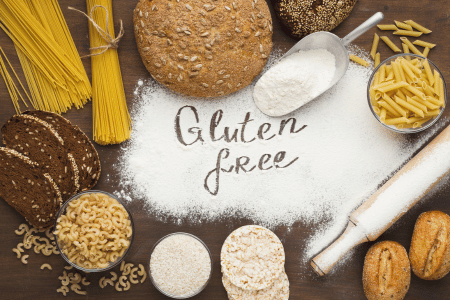
Key takeaways
Gluten-free diets are on the rise, and many claim gluten is bad for you. The reality? There’s little evidence to prove gluten is harmful unless you have a sensitivity or allergy.
Potential benefits of a gluten-free diet for those without celiac or other intolerances include:
- Improved digestion
- Better mood
- Reduced inflammation
- Increased energy levels
- Weight loss
- Better-looking skin
Remember, though, gluten-free diets are not without risks. They could lead to nutritional deficiencies and constipation.
Plus, not all gluten-free foods are healthy, and this diet may even increase your risk of heart disease. Finally, living gluten-free can be very expensive, and it will limit your food options.
If you found this article useful, help us spread the knowledge and share it with a friend.
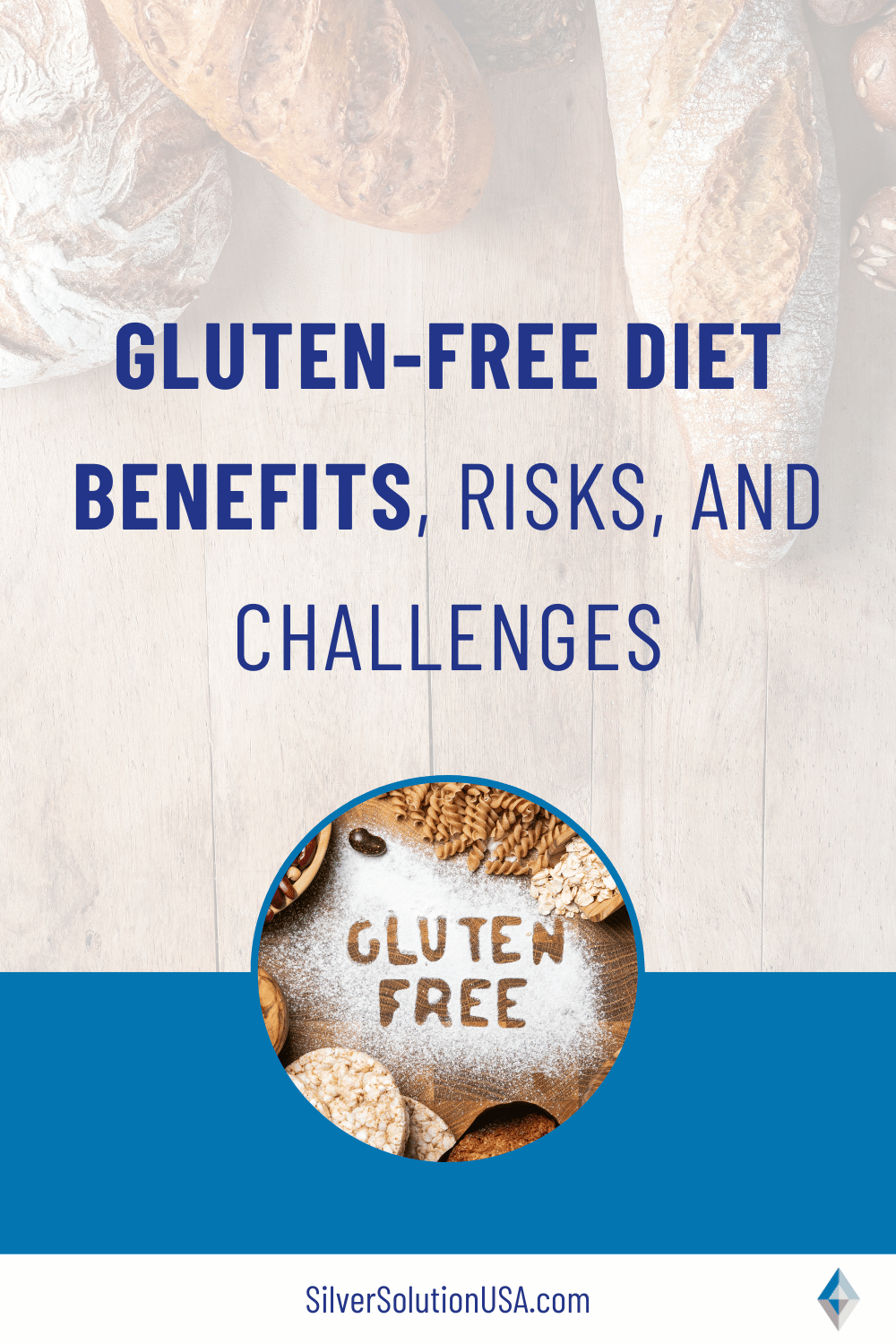
Health/Medical Disclaimer
This blog post does not provide health or medical advice. This blog post is for informational and educational purposes only and is not a substitute for professional health or medical advice. Before taking any actions based upon such information, we encourage you to consult with the appropriate medical and healthcare professionals. We do not provide any kind of health or medical advice. The use or reliance of any information contained on this blog is solely at your own risk.
Sources
https://celiac.org/gluten-free-living/gluten-free-foods/
https://www.nature.com/articles/s41467-018-07019-x
https://pubmed.ncbi.nlm.nih.gov/23357715/
https://celiac.org/main/wp-content/uploads/2017/05/gluten.pdf
Recent Posts
-
Are sunscreen ingredients harmful?
Sunny days can bring a lot of fun. Going out for a swim, spending time in nature, or relaxing on the …18th Mar 2024 -
The Veggie Debate: Does Cooking Vegetables Destroy Nutrients and the Best Ways to Cook Them
Vegetables are one of the healthiest foods you can choose. Some people downright hate them, while so …4th Mar 2024 -
Best Foods for COVID Recovery and Prevention
A few years ago, a new virus took the world by surprise. COVID-19 may look like the flu on the surfa …19th Feb 2024

